First-Class Cabin: A Brief Analysis of the Mechanism and Product Features of the NFT Card Game Parallel
Original Source: First Class Cabin
Original Title: "Parallel Life Research Report"
Concise Interpretation:
Parallel.life is a trading card game (TCG) based on science fiction novels. The game has not yet launched, and the specific game mechanics are unclear. The token design is quite unique; on one hand, the tokens are NFT-ified, and on the other hand, governance rights and equity are separated. From these two points, the project has its own novelty, but the specific implementation will depend on the economic model announced later. However, a risk to consider is that the liquidity of NFTs may be relatively poor compared to tokens. The team consists of 9 members, including YouTube co-founder Chad Hurley. The project's NFTs are not widely circulated in the market, but the sales data is quite good.
Fundamental Overview
Team: The initial team of Parallel consisted of 8 members, and YouTube co-founder Chad Hurley announced in March 2021 that he would become the 9th member of the team. His Twitter account background image has also been changed to Parallel's NFT.
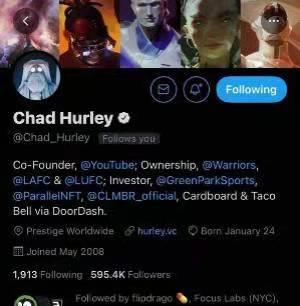
Figure 1 Chad Hurley's Twitter Account
Disclosed personal information also includes Connagh Hawkins from the design team, who transitioned from being a YouTube blogger to a full-time game designer at Parallel. His channel, [Merchant], has 157,000 subscribers. Previously, he worked as a QA analyst and community manager for Jagex's game [Chronicle: RuneScape Legends], which is likely only second in popularity to [World of Warcraft]. Most of the other team members have unclear backgrounds.
Funding: A newly launched crypto fund, Yunt Capital, has invested in this game and has become a partner, but the specific amount has not been disclosed. From the publicly available NFT sales data, the team has currently raised about $2.66 million, as detailed below.
Game Mechanics
Parallel is a TCG card game based on science fiction novels. Such games are based on collecting cards, where players purchase and collect cards, then flexibly use different cards according to their strategies to build rule-compliant decks for gameplay. The game background involves the migration of human elite genes to space, ultimately evolving into five races, which are the five characters in the game: Earthen, Marcolian, Augencore, Kathari, and Shroud, as shown in Figure 2. Each character has different functions, as shown in Table 1. In addition to the five characters mentioned above, the game cards also include Universal (wild cards) and Unknown Origins (unknown uses and functions).
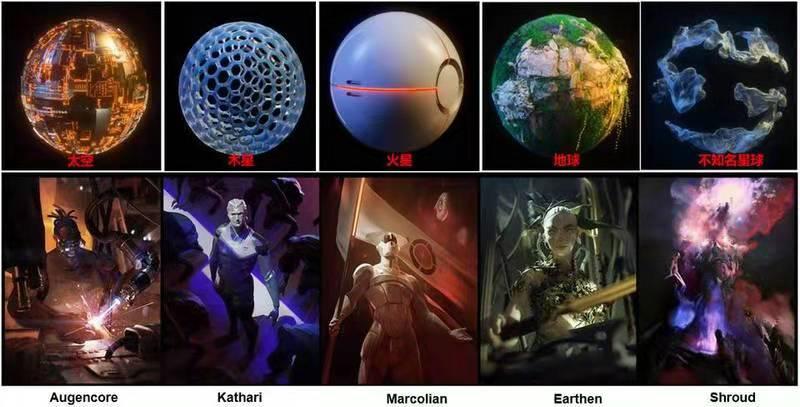
Figure 2 Characters and Corresponding Planets (Parallel)
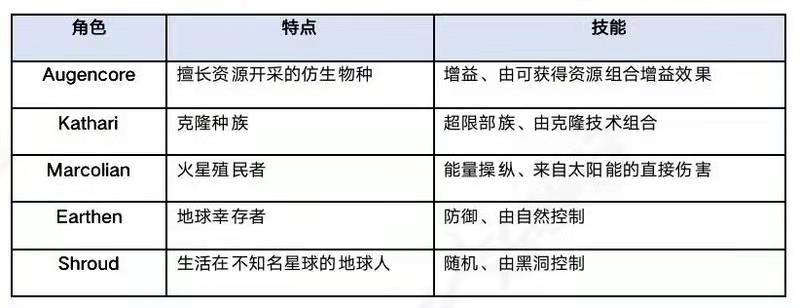
Table 1 Characters and Skills
Players need a deck containing 40 cards for 1V1 battles, which will consist of individual Parallel game cards and universal cards. The game is currently not online, and the specific game rules are temporarily unclear. Moreover, the current NFTs are in the α version, and to ensure gameplay balance, the following character skills will not be written into the NFTs for now. The subsequent β and other versions are expected to add health points, experience points, stamina, etc.
Product
The current product focus of Parallel is NFTs, with each NFT created based on character characteristics. There are currently numerous card types, as follows:
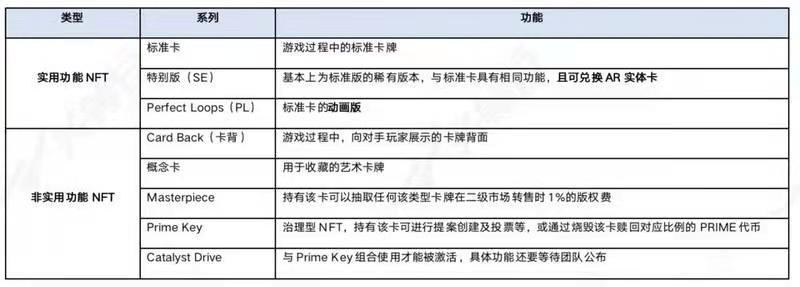
Table 2 Card Classification
Taking the card [The First Son of Mars] as an example, we can see that in addition to the main pattern, this card also includes the following four elements:
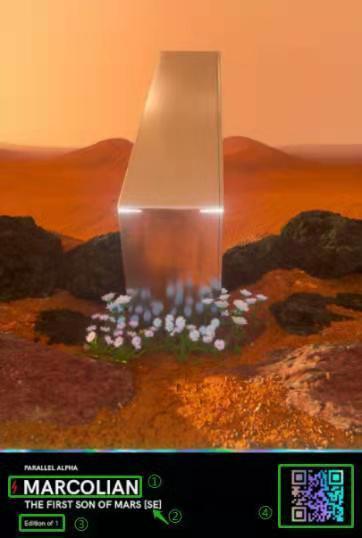
Figure 3 The First Son of Mars [SE]

Utility Function Cards
Utility function cards refer to playable game cards. The rarity of standard Parallel game cards is divided into Common, Uncommon, Rare, Legendary, and Prime, with different graphic dividers and QR code colors corresponding to each rarity, as shown in Figure 4. Therefore, users primarily distinguish card rarity by QR code color. Among them, Prime cards are very rare, with issuance possibly below 10. Due to the powerful functions of this card and considerations for game fairness, this card is prohibited from participating in ranked matches. The ways to obtain such cards include participating in presales, event giveaways, or booster packs (similar to blind boxes) sold with random drops.
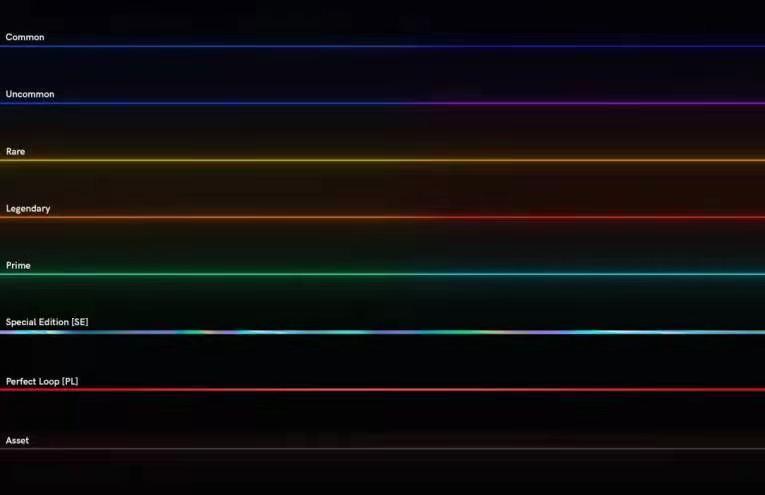
Figure 4 Rarity Color Classification
In addition to the five types of rare cards mentioned above, there are also some non-standard rare cards, such as SE and PL. These two versions of cards have the same functions as standard cards but differ slightly in issuance or artistic expression. For example, the QR code color of the SE version is in a laser format, while the QR code color of the PL version is red.
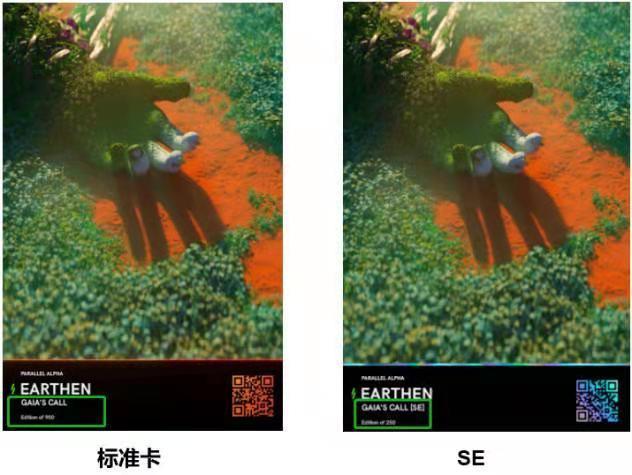
Figure 5 GAIA'S CALL Different Version Cards
Non-Utility Function Cards
Non-utility function cards include Card Backs, Concept Cards, and Asset Cards (Prime Key, Catalyst Drive), with the QR code color of Concept Cards and Asset Cards uniformly white. Although the card back is a game card, it has no practical function in the game. Loyal players may want to choose their own Parallel card backs or special animated card backs. Concept cards serve as collectible artworks, and their value may be determined by the card's craftsmanship or issuance. Asset cards are a special type of NFT, among which the Prime Key is a governance NFT. Holding this card allows participation in proposal creation and voting, or burning the Prime Key to redeem a corresponding proportion of PRIME tokens. The burned Prime Key will turn into a red collectible card with no function. The future token economic model of the project may be determined by this card, with acquisition methods including airdrops, secondary market purchases, or booster pack purchases. Catalyst Drive needs to be used in conjunction with Prime Key, with a total of 150 cards. Its gameplay is yet to be announced by the official team, and acquisition methods include secondary market purchases or booster pack purchases.
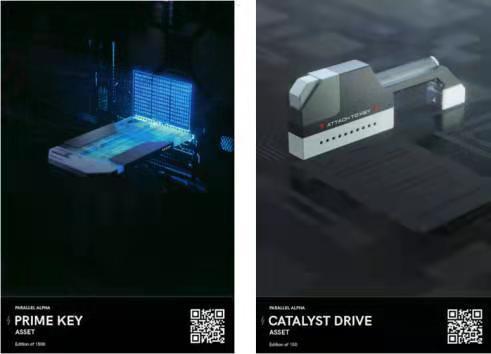
Figure 6 Prime Key, Catalyst Drive
Another special non-utility function card in Parallel is the Masterpiece. This card does not carry a QR code and has only 1 issuance. Holding this card allows the holder to receive 1% of the copyright fee from the resale of corresponding type cards (such as standard cards, SE, or PL) in the secondary market, distributed quarterly. The acquisition methods for this card include presales, secondary market purchases, or booster pack purchases.
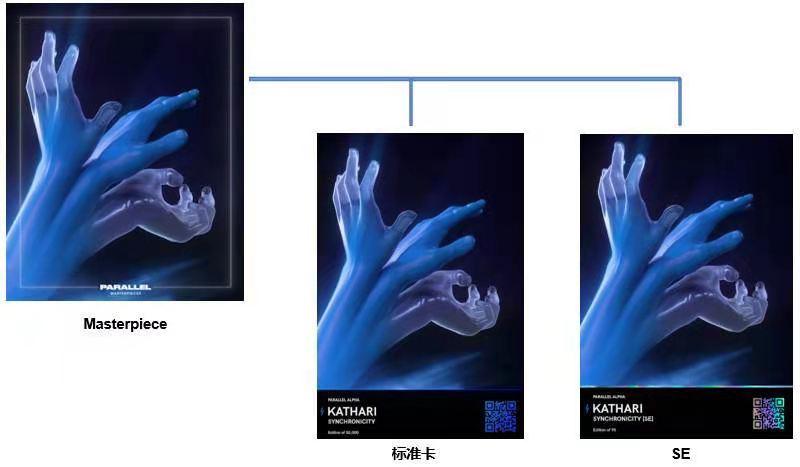
Figure 7 Masterpiece Corresponding Cards
Card Fun Factor
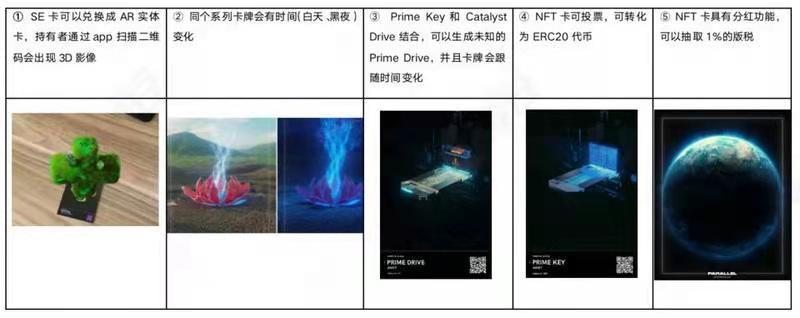
Issuance Data
Parallel first issued Alpha card packs on March 25, 2021. This presale included 15 types of game cards, 5 types of Card Backs, and 8 types of Concept Cards, collectively referred to as PS15. Approximately 256 participants took part in this presale, with total sales amounting to $1.3 million.
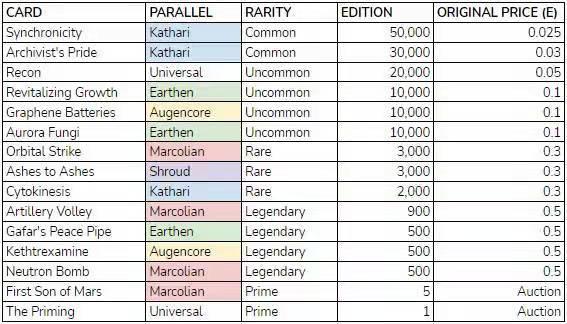
Figure 8 PS15 Initial Presale Types
Subsequently, the team found that the pricing of these cards was too high. To compensate PS15 holders, the team conducted an airdrop compensation plan in May, which included Prime Keys, SE version game cards (including rare cards), and card backs. Detailed data is as follows:

On June 14, 2021, Parallel launched its first Faucet event, issuing 10,000 [Rug Poll] game cards and 1 [Rug Poll] Masterpiece.
On July 31, 2021, Parallel conducted its first booster pack airdrop (sale), with specifications for the airdrop being standard version (4 cards / 0.01 ETH), enhanced version (3 cards / 0.1 ETH), and deluxe version (1 card / 0.2 ETH). The more expensive the pack, the greater the chance of obtaining rare cards, which included Concept Cards, Prime Keys, Masterpieces, and Catalyst Drives. A total of 13,813 packs were sold, with the final sales data as follows:

Figure 9 Card Pack Sales Situation
Taking Common [SE] as an example, this pack contained a total of 15,000 cards, with 12,689 cards ultimately issued and 2,311 cards returned. Therefore, this booster pack airdrop issued a total of 49,988 NFTs, all of which were sold, accumulating 556.85 ETH. Based on the price of 1 ETH = $2,440 on July 31, the total value was approximately $1.36 million.
The team expects to conduct the third and fourth NFT issuances at the end of October 2021 (or early November) and January 2022 (to be determined), with both issuances changing to booster pack sales.
Secondary Market Data
As of August 16, Parallel's sales data on Opensea.io shows that the number of Parallel NFT holders has reached 6,000, with a cumulative trading volume of 13,445 ETH. Based on the current price of 1 ETH = $3,297, this amounts to approximately $44.33 million, ranking 23rd on the Opensea NFT Top list, with considerable sales data. The peak sales period was mainly concentrated in the past month.

Figure 10 Parallel's Secondary Market Sales History for the Past 30 Days, Data Statistics as of August 16, 2021

Figure 11 Sales Data Comparison at Different Stages
From the secondary market sales data, it can be seen that the price of NFTs is significantly related to card rarity and issuance. The rarer the card and the fewer the issuance, the higher the price. For instance, a Prime rare card [The Priming] had its last transaction history (March 27, 2021) at 26 ETH, with the latest listing at 2,000 ETH. Early trading records for Masterpiece ranged from 1 to 5 ETH, with current listings starting at 90 ETH. The latest transaction price for Catalyst Drives (August 10) was 35 ETH, and for Prime Key (August 10) was 7.19 ETH.
Economic Model
From the project layout (Figure 12), Parallel is an ecosystem driven by games, with important sectors including game development, DAO governance, token economy, and NFT sales. In the future, it may derive skins, land auctions, anime, and book releases, but it may still be too early to discuss these.

Project Layout
Currently, the more certain points are:
• Holding a Prime Key means holding tokens. Prime Key holders can participate in Parallel's community governance. Parallel has a Paradox community voting mechanism, where Prime Key holders can create proposals and vote, with one key equating to one vote. Prime Key holders can also choose to burn the card to redeem a corresponding proportion of PRIME tokens. How to balance the relationship between governance and equity will depend on the team's subsequent measures. The total number of the first batch of Prime Keys is 1,500, with approximately 1,000 expected to circulate. Based on the latest secondary market transaction price of 7.19 ETH, the total market value is approximately $32.7 million.
• Masterpiece is the most direct profit-making method in Parallel, allowing holders to receive 1% of the copyright fee from the resale of corresponding game cards (standard cards, SE, PL) in the secondary market, distributed quarterly. Therefore, its revenue may depend on the issuance and popularity of the corresponding type of game cards. Additionally, the copyright fee is set at 10%, with 5% allocated to the community pool, 4% to the development team, and 1% to Masterpiece holders.
• Catalyst Drives requires activation by a Prime Key to use, and specific gameplay needs to be announced by the official team. It may be the key to balancing equity and governance. The total number of cards is 150, and based on the latest secondary market transaction price of 35 ETH, the total market value is approximately $16.35 million.
From the economic model perspective, Parallel's current products are all realized through NFTs, including project governance, which essentially means token NFT-ification. The governance rights and equity are separated, and how to balance the two may depend on the gameplay of Catalyst Drives. Therefore, Parallel's token economic design has its uniqueness.
Currently, for this project, the Prime Key may be a relatively good investment avenue, but the risk to consider is that the liquidity of NFTs may be relatively poor. Moreover, the team has issued about 70,000 NFTs, but currently, only over 200 are circulating in the market, which means that most cards may still be in the hands of the original holders, indicating they may have a positive outlook on this project.
Comprehensive Evaluation
From the currently disclosed information, this project may be a TCG card game, with game development just beginning and game mechanics still unclear, so we cannot assess the playability of the game. However, the participation threshold for card games may be relatively high, and the audience for the game is relatively narrow. Still, such strategic games will correspondingly increase user stickiness, leading to a longer game lifecycle. Additionally, the game's background setting has a sci-fi nature, with distinct racial characteristics, showing potential for forming an IP.
From the current card production craftsmanship, the team's art design is quite impressive, with beautifully crafted cards. The combination of NFTs with augmented reality (AR) gives the cards collectible value to some extent. Based on the complexity of card design, this game is likely to be a medium to large-scale game, with the difficulty of game design lying in balancing and countering card gameplay. Since the personal resumes of team members are not publicly disclosed, we cannot ascertain the level of the design team. However, given the involvement and support of the YouTube co-founder, the project team is likely to be competent.
The complete economic model of Parallel has not yet been released. From the currently disclosed information, its token mechanism design has its uniqueness: firstly, the separation of governance and equity, and how to balance the relationship between the two may be quite important; secondly, another notable feature of Parallel is the token NFT-ification, showcasing the project's novelty. However, one risk to consider is that the liquidity of NFTs may be relatively poor compared to tokens. Of course, when evaluating the project, the most important aspect is to look at the closeness of the token's integration with the game, which will determine the token's value. For an early-stage project, this aspect may still be difficult to assess.
In terms of promotion, the project is still in its early stages, with limited publicity. The only public voice is from the YouTube co-founder, whose involvement has allowed it to gain some attention in a small circle. However, currently, this game is only popular within the NFT niche, with relatively few followers.
In summary, Parallel is still in its early stages, with certain highlights in project design, so we will continue to monitor this project.










